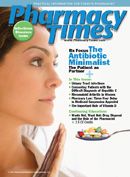Case Studies
Dr. Coleman is an assistant professor of pharmacy practice and director of the pharmacoeconomics and outcomes studies group at the University of Connecticut School of Pharmacy. Dr. Sobieraj is a senior scientist at the University of Connecticut/Hartford Hospital Evidence-Based Practice Center.

CASE ONE
Multiple Sclerosis
AP, a 33-year-old woman recently diagnosed with relapsing-remitting multiple sclerosis (RRMS) comes to the pharmacy counter with her first prescription for interferon beta-1b (Betaseron) 0.25 mg subcutaneously every other day. The diagnosis of RRMS was made a few weeks prior, after AP began complaining of bouts of changes in sensation, muscle weakness, fatigue, and unsteadiness on her feet. At present, AP clearly looks overwhelmed by her recent diagnosis and appears apprehensive about taking this new medication. What counseling should the pharmacist provide to AP as a patient new to interferon treatment?
CASE TWO
Acne
LM, an 18-year-old woman who has suffered from acne for the past 2 years, comes to the pharmacy. In the past, the pharmacist has helped her in the selection of several different OTC products; however, LM has had little success. LM appears to have 10 to 20 lesions located around her jaw line and chin with several lesions appearing erythematous and pustular. She has no involvement of her chest, back, or shoulders. Recently, LM went to see a dermatologist who diagnosed her with moderate acne and gave her 2 prescriptions: adapalene (Differin) 0.1% cream to be applied to the affected area at bedtime and clindamycin (Cleocin-T) 1% lotion to be applied to the affected area daily. She was instructed by the dermatologist to use each product after cleansing her skin and to return in 2 months for a follow-up appointment. When picking up her prescriptions, LM asks the pharmacist, “Why do I need 2 medications for my acne—shouldn’t I just try one to start?” How should the pharmacist respond?
ANSWERS
Case 1: Beta-interferons (IFN-bs), including IFN-b-1b (Betaseron), are first-line treatments (as is glatiramer acetate) for patients with RRMS (characterized by clearly defined relapses with full recovery or with sequelae and residual deficit upon recovery, but no disease progression during the relapses). Other commonly used treatments include natalizumab and mitoxantrone; however, due to their associated toxicities, these agents are typically reserved for those who fail IFN-bs or glatiramer. The pharmacist should counsel AP that, because most of the immune response in RRMS occurs early in the disease course, it is commonly accepted that treatment should begin early. Although IFN-bs will not stop the disease or make her feel better, they will decrease her relapse rate and slow the progression of the disability associated with RRMS. The pharmacist should also counsel AP that side effects, including reactions at the site of injection and flu-like symptoms, will likely occur. These side effects are best treated with OTC ibuprofen. Acetaminophen may also be used to treat these side effects, but its routine use should probably be avoided, as it may increase the risk of asymptomatic liver dysfunction commonly associated with IFN-b use.
Case 2: The treatment of acne is based on severity, which varies according to the number, type, and distribution of lesions. Monotherapy with a topical retinoid (eg, adapalene) is appropriate for mild forms of acne. For moderate forms of acne, combination therapy is often necessary. Erythematous and pustular (inflammatory) lesions require treatment with an agent possessing antimicrobial properties to decrease colonization of Propionibacterium acnes. Although topical retinoids are effective in normalizing keratinization, preventing comedone formation, and improving penetration of other topical agents, they do not possess antimicrobial properties. Given the severity of acne and evidence of inflammatory lesions, the optimal regimen for LM is a combination of a topical retinoid and an antimicrobial agent. LM should be counseled on the unique role of each medication and the importance of initiating both therapies now. LM should apply the topical agents to acne-prone areas of her face—not limited to individual existing lesions, because therapy is largely preventive. The pharmacist should inform LM that her acne may worsen upon initiation of therapy, but she should notice an overall improvement within 1 to 2 months.
function showAnswer() {document.getElementById("answer").style.display = 'block';document.getElementById("link").style.display = 'none';}

